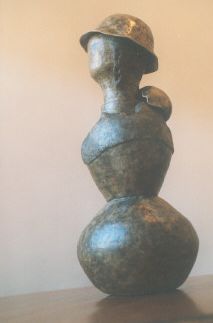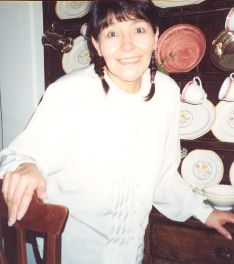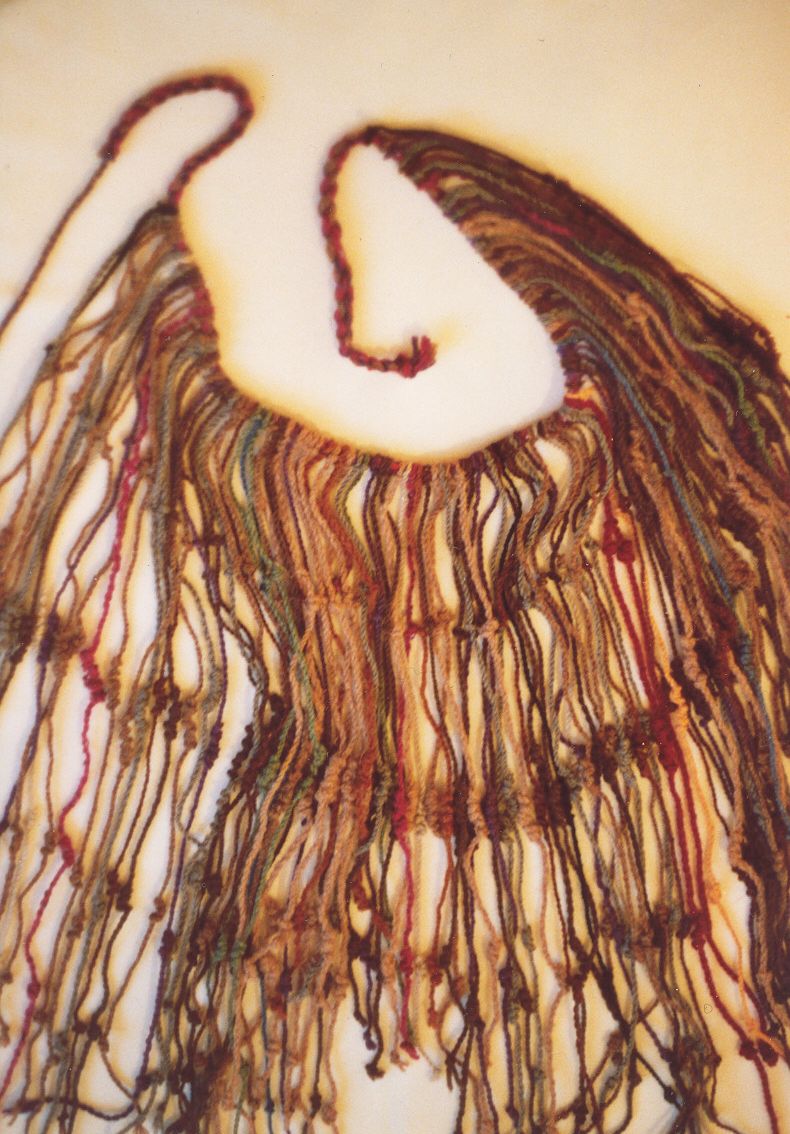CHUWAS
&
QUIPUS
(Pot-sculptures and Khipus)
Exhibition at the Chelsea Gallery
Chelsea Old Town Hall. London, UK
20-25 March 2006
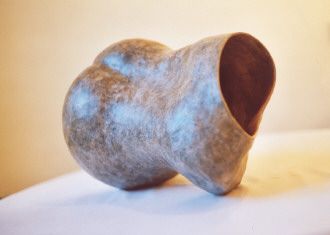
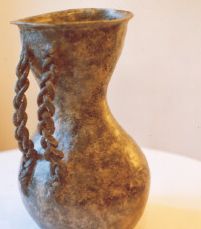
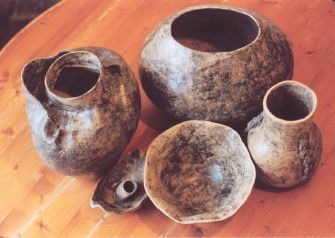
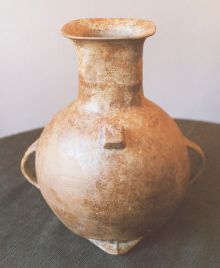
Return
to home page
Born in the southern highlands of Peru, Susie Goulder has chosen as
her professional name a word that encapsulates the sources of her inspiration:
warmi means 'woman' in Quechua, an indigenous language of the Andes.
Warmi, a woman of the Andes, makes chuwas, another Quechua word from
the southern Andes meaning hand-made earthenware bowls. Chuwas hold
the best things in life – the most delicious food, the most beautiful
flowers – but Warmi's chuwas defy easy classification. Are these
magnificent, sensuous works pots or sculptures, vases or women? They
are, of course, both: they are vessels in the way that a woman's body
is potentially a vessel, a container of new life. They are formed of
clay, the material from which, in so many origin myths, the first humans
were formed. And, as in the case of the first humans, they are shaped
without help from technology, by careful, loving hands, using the traditional
Andean technique of coiling.
Warmi's sensitive fingers create chuwas out of memories, and as containers of memory. Warmi's women are drawn from Andean history: Micaela Bastidas, the eighteenth-century revolutionary who was horribly murdered by the authorities for her role in the rebellion of 1780, led by her husband Tupac Amaru; and from literature: Doña Felipa, the charismatic ring-leader of the uprising of the chicheras* against corruption in José María Arguedas' novel Rios Profundos (1956). And they are drawn from mythology, above all from Pachamama, the supreme earth mother figure of the Andes: Pachamama, the land and the landscape, mother of the fruits of the earth, whose offspring include maize and potatoes, precious metals and clay. These children are created and nourished by Pachamama in the same way that a baby grows in the womb, is born and suckles from its mother. They owe their lives to her, and we in turn – our modern society and the world's multinational corporations – feed off her children.
Pachamama also personifies the Andean women of today, who continue to be exploited by forces beyond their control. Warmi's clay figures embody ideas of motherhood, fecundity and continuity; strength, security and stoicism. In the Andes the two outstanding art forms are pottery and textiles, both fundamental to human evolution: pots to cook and preserve food, to carry water, and to protect the bones of ones ancestors; textiles to clothe and protect the body, to carry a baby or bring in the harvest, and to dress the dead. Both have very ancient roots in the Andean region (pottery dates back about 3500 years, weaving is perhaps 1000 years older) and have always been used as important bearers of meaning.
Traditionally Andean peoples have looked to the past to guide them into the future: the beliefs and actions of the ancestors can point the way forward. Warmi's work provides a similar bridge between past and future: it draws on the past – in terms of material and technique, form and content – but it does so in order to shine a light into the future, to demonstrate ways in which ancient knowledge can still illuminate the road ahead.
Valerie Fraser
January 2006
* Chicheras: sellers of chica, a beer made from fermented maize.
** The variables in the construction of a quipu include the raw material (llama or alpaca wool or cotton), colour, direction in which the thread is spun and plied, and the position and type of knot employed.mm
